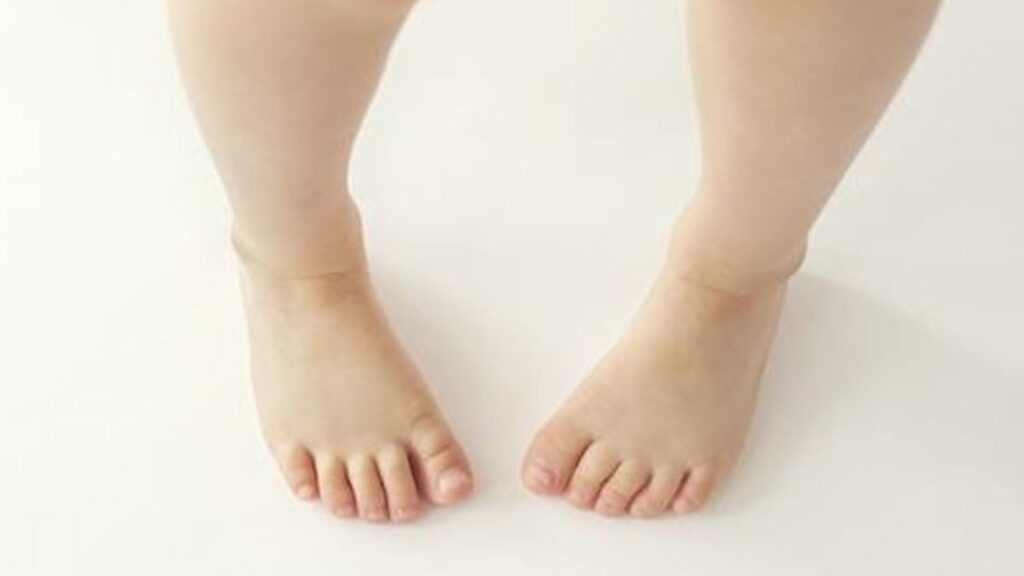What is Intoeing Gait?
Intoeing gait, also known as “pigeon-toed” gait or “duck-like” gait, is a walking pattern where the feet turn inward instead of pointing straight ahead while walking.
It is commonly observed in children and can result from various underlying factors:
- Femoral Anteversion: This is one of the most common causes of intoeing in children. It occurs when the upper part of the thigh bone (femur) twists inward more than usual. This inward rotation causes the knees and feet to point inward when walking.
- Tibial Torsion: Tibial torsion refers to the twisting of the shinbone (tibia). Inward twisting of the tibia can lead to intoeing gait.
- Metatarsus Adductus: Metatarsus adductus is a condition where the front part of the foot (forefoot) turns inward. This can contribute to an intoeing gait pattern.
- Muscle Tightness or Weakness: Muscle imbalances or abnormalities in the muscles of the hip, thigh, or lower leg can also contribute to intoeing gait. Tightness or weakness in certain muscles can affect the alignment of the legs and feet during walking.
- External Factors: Certain external factors, such as improper footwear or habitual sitting positions, may also contribute to intoeing gait.
It is often detected during early childhood and may improve as the child grows and their musculoskeletal system develops. However, in some cases, intoeing may persist into adolescence or adulthood and may require intervention if it causes pain, instability, or functional limitations.
Are you suffering from any foot condition? At The Chelsea Clinic, we can help. One of our podiatrist can assist and then recommend what treatments are best to get you back on track. Podiatrist South Kensington
Schedule an appointment here or you may call us at +44 (0) 207 101 4000.
We hope you have a feetastic day!
-The Chelsea Clinic and Team




